Top 10 tips from Ivalo Nedkov, a co-owner of Studio FourPlus, which is located in Sofia, Bulgaria. The studio specialises in branding and motion design.
Category: Baseline shift
Alumni talks: strive for progress
In week 10 Baseline Shift welcomed back some graduates from the department who talked to us about their journey after graduation and current positions. Lined up we had book designer and art director Nikki Ellis, award-winning designer Anne Brady and 3D and 2D motion designer – Ed Hendry.
Nikki Ellis
‘It was fascinating and challenging, the books I worked on were varied.’ – Nikki Ellis
Nikki Ellis graduated in 2007 from a four year undergraduate master MDes course which was then offered by the department. When she graduated Nikki also managed to get a job as a result of the degree show at the end of her fourth year. ! The company was called Quadrille and it was a small publishing company which worked on books on food and drinks. She worked in Quadrille as a senior designer for 13 years. Nikki started as a design assistant, learning the ropes of book design in style sheets and layout. She designed cookbooks which she says were remarkably ‘challenging’ but interesting in their specific typography and text hierarchy. Nikki shared with us a few fantastic examples.
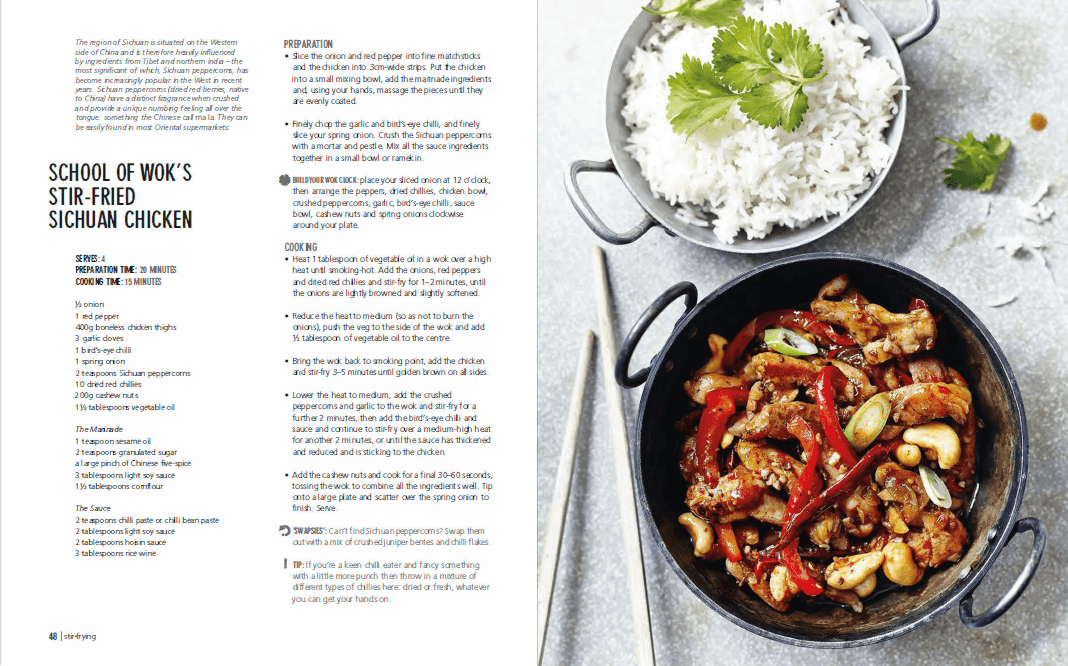
This is a Chinese cooking book menu by Jeremy Pank; he wanted to make Chinese cooking accessible for everybody. There were lots of bullet points used in this book and icons, as the example above shows.
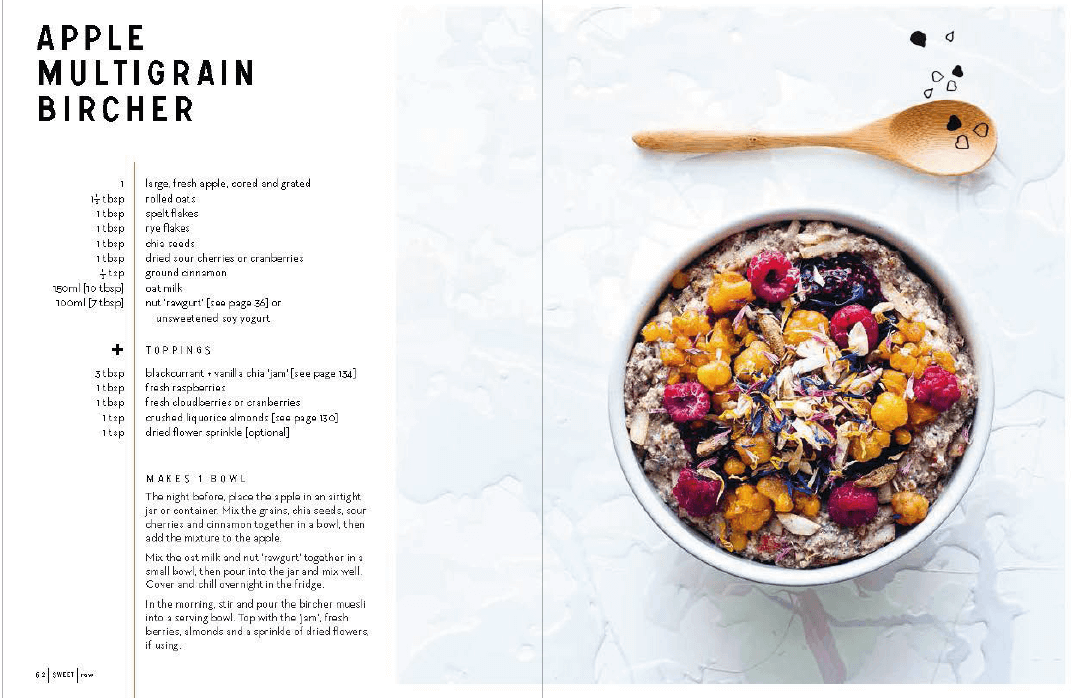
Another example was a book called ‘Porridge’, which allowed Nikki to experience being part of the photo shoot and also help out with it, which in her words was ‘amazing!’ Annie, the author of the book, wanted to have her book include her ‘art’, in the form of the porridge bowls she created like the one shown in the example above.
Niki’s experience in designing cookbooks made her better at typography, layout and page formatting, and the examples she brought in show her ambition in these aspects of design.
Nikki encourages designers not to force themselves to work within a set of rules and constraints but to have their creativity and ambitions go beyond limits and discover what their work without regulations and restrictions could be. An example of a principle Nikki uses within her work in designing books is making use of the colour black for fonts. Nikki also discussed another example: the line length in the text, which she tries to limit to no more than 13 words across, to suit comfortable reading. Some other things she looks out for are running feet, folios, subheadings, etc.
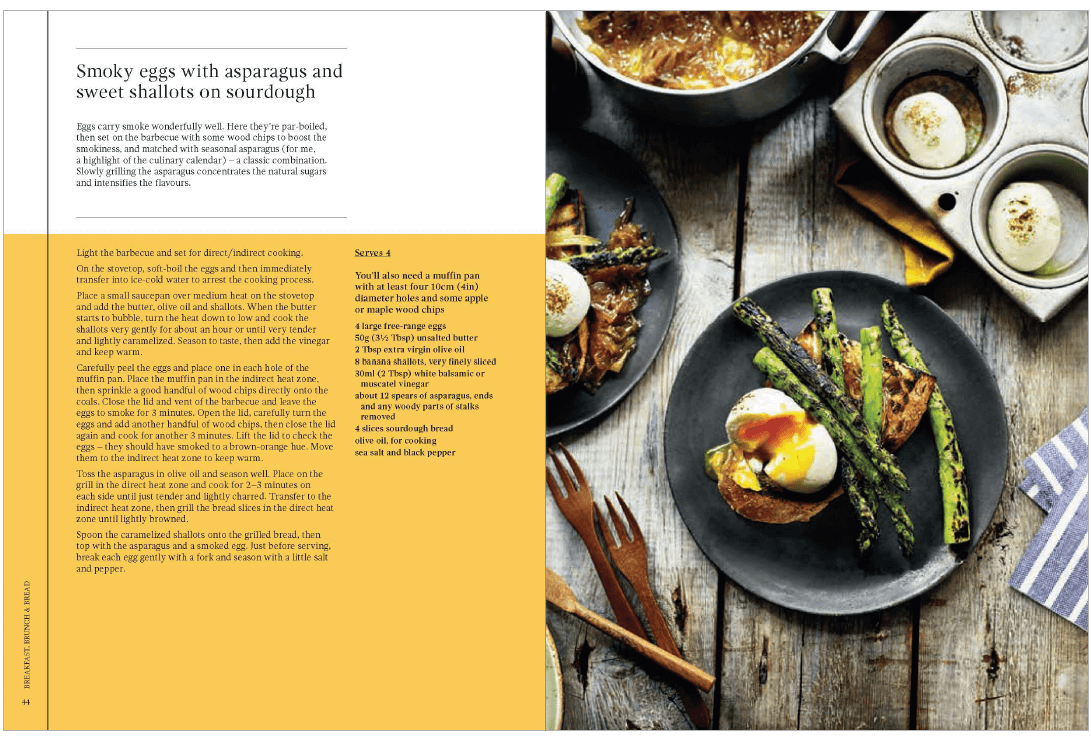
However, Nikki has to comply with some rules, as the cookbooks are almost always distributed internationally, so there is a need to design in a way that is suitable for translation, and thus for different text extents.
Nikki’s main challenge when designing cookbooks is how to arrange content (images, recipe, commentary, notes) to create balance on the page to make it a user friendly reading experience.
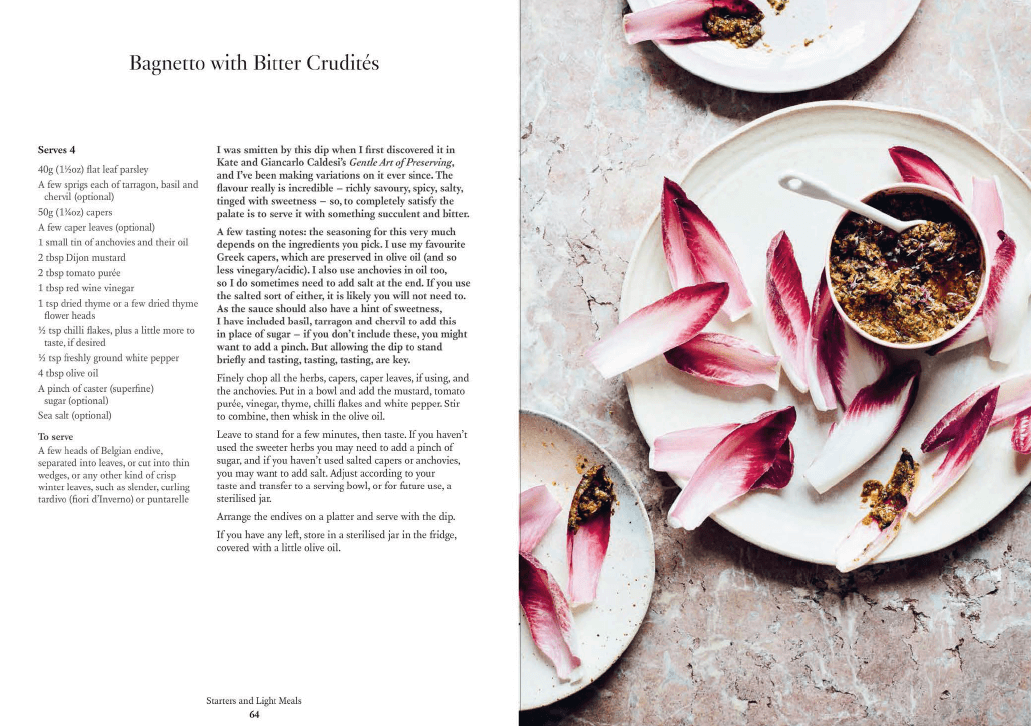
Space can be used to both separate and connect elements in a design, Nikki explained. Wider spaces separate elements from each other and narrower spaces connect elements to reveal relationships between them. The meaning of space is more critical than some consistent lining up for the sake of rigidity. Nikki has a stage for starting points, as in headings and subtitles but does not like to have a sense of constraint in her work. Therefore this is why she makes her own set of rules when designing a master page layout.

‘Textured materiality.’ – Nikki Eliss
Cover design is also part of Nikki’s work. The example below shows a textured book cover with a background of a debossed grey rusty grain that Nikki designed, creating a debossed finish in the title.
These are some of the examples she showed in the session …
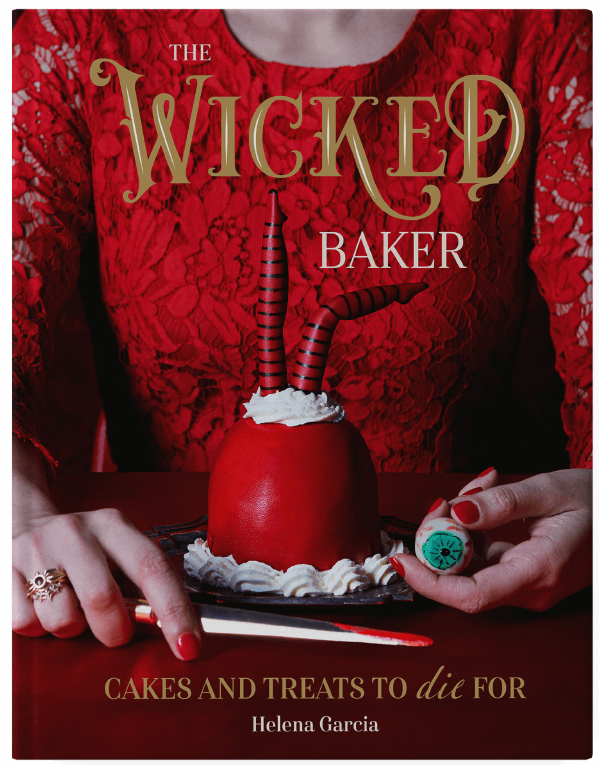

Anne Brady
‘I took a slightly different approach from Nikki.’ – Anne Brady
Anne graduated from the department in 1994, describing her experience at Reading as invaluable. Throughout her career, there have been a lot of changes in the design world and she says she has been trying to blend and merge her work into the digital world and has become much more interested in the dynamics of what digital delivery allows. Still, she says it was a great privilege to come from the printing background of the letterpress studios in Reading and understanding how typography (and technology) have developed over the last thousand years gave her a great headstart in her career.
Hired at the degree show by a studio called Jeffrey Design which only employed graduates of Typography and Graphic Communication, she considered herself ‘very lucky’ . She also said she learned and experienced the outside world of graphics through the Real Jobs she completed while at the department. Therefore, Anne suggested it is essential for us all to put ourselves into opportunities and collaborate in real work experiences while overcoming the challenges that will stop us achieving.
Through the studio she worked on a job at Cambridge University, with her boss back then – Sally. They designed the press sheet for ‘Cyclopedia Cambridge’. ‘It’s hard to imagine’, as Anne explained, ‘it was a 4000-page book which was separated into a series of editions.’ ‘It was an excellent piece of typographic design.’
After working with Sally for a few years, Anne was moved on to a job at the Museum of London, designing all of the marketing material including all of their publications and sometimes even organizing exhibitions. Her main task was to create exhibition designs and promote them. Anne enjoyed this experience and learnt a lot from the challenges.
‘As designers, we all have different skills.’ – Anne Brady
Anne returned to Dublin around 1998 and began working in a very corporate company – a design agency which worked on short films and TV shows. Anne was happy working there for about a year managing a team of 12 people. After that she decided to go solo and created her own design studio, called Vermillion, which is her focus to this day. It was hard at first when starting out but through the years she and her team started finding more and more clients and gaining their trust. Twenty-two years later, Anne’s team is still going strong, currently working on a chair exhibition for the National Museum of Ireland, working with the Department of foreign affairs and trade–designing lots of materials in 17 languages for 80 embassies around the world, which is fascinating. They are now also working on a book for the National Gallery of Ireland, which showcases all the paintings and artworks acquired by the Gallery over the last 15 years.
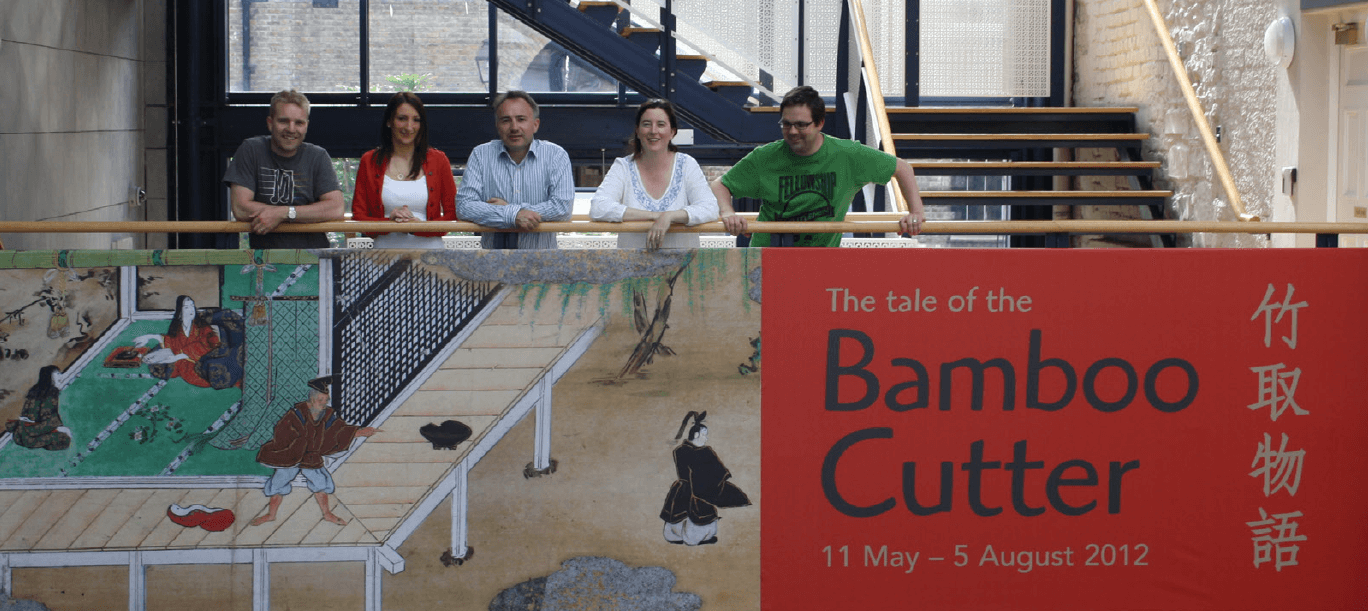
Anne shared this image (shown above) with us and with great pleasure and respect explained each person’s role in the team. Anne and her colleagues have worked as a team for ten years, creating a good collaboration, which is a very important aspect in the field of graphic communication. They are all different in terms of skills and abilities but working together makes a great team.
Anne’s ability was to always bring typography within a project but she also has some essential skills working with multimedia.
The National Library was one of their more significant clients as they have an incredible collection (National Library of Wales) Anne described the museum as one of the world’s leading museums of Islamic, Western and Eastern manuscripts.
Anne also talked about her experience in exhibition design. She shared with us that it is quite difficult to work with a living artist and design a cover for their exhibition. She and her team had an interesting experience when they put type on one of the artworks to create a poster for the exhibition and they had to design around 80 different variants of the poster before they got approved and published because a lot of Anne’s team’s designs were intruding too heavily with the artwork. As we all know, prototyping is always the key to success before launching. The National Gallery of Ireland was essential and one of the main clients they operated with, which made them have a good relationship with the studio.
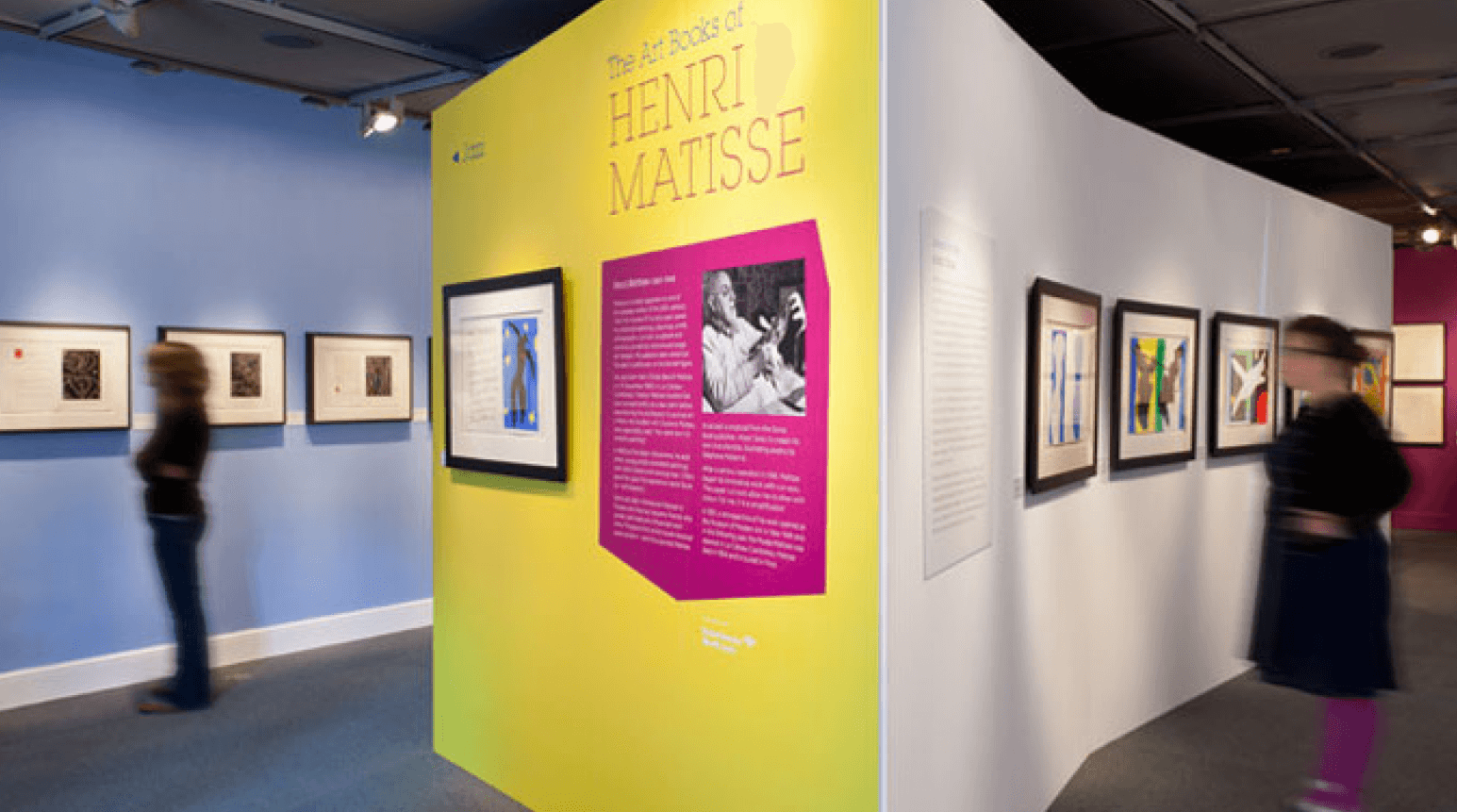
Anne’s team also worked on designing Dublin’s zoo map, as you can see in the image shown below. It was an exciting project the team worked on because most of the design decision were sensible, so they had to design the map and fix some of the icon errors.
These are examples of Anne’s team’s incredible work!
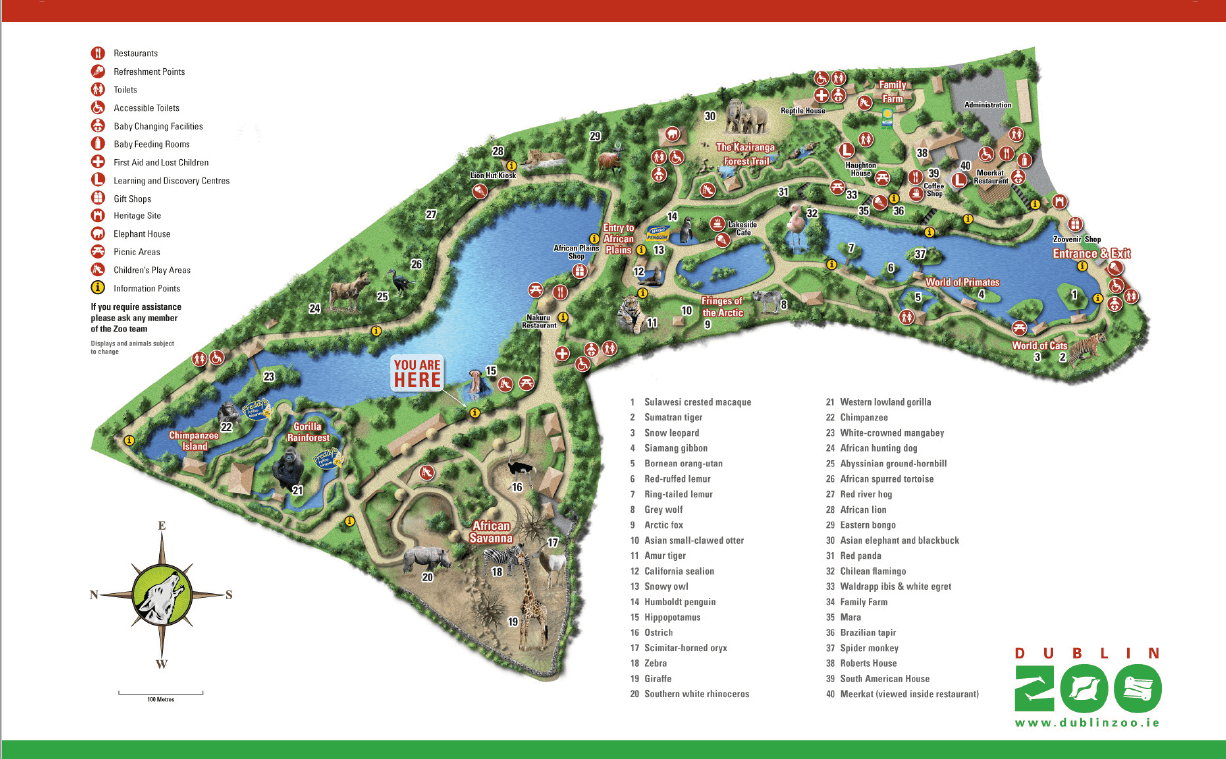
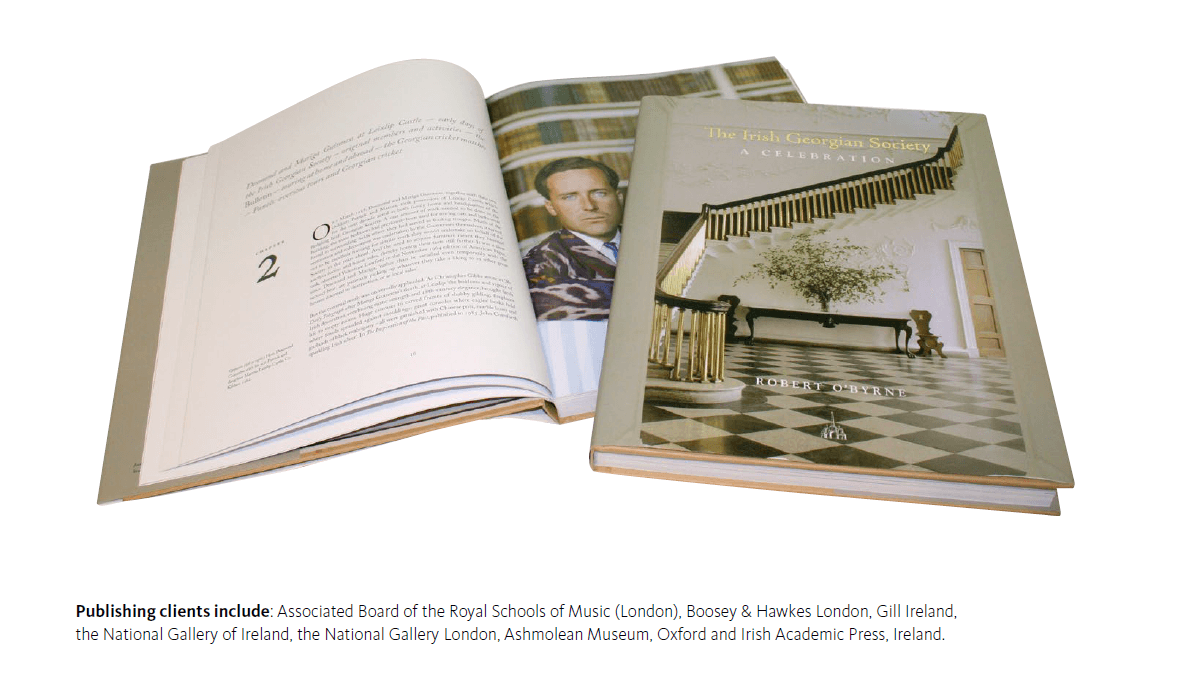
‘I have designed over 85 books for national and international publishing houses.’ – Anne Brady.
Ed Henry
Ed’ presentation was interesting since he has taken a very different, and more digital, career path. He now lives in Berlin and works as a senior motion designer at Delivery Hero. His work at the company mainly centres around creating motion designs and other types of promotion videos. However, what keeps Ed going is his obsession with music and 3D motion design. He has worked a lot with games and other animation projects for friends and colleagues who also work in the music industry. Ed shared his experiences and passion for his work and his motivations, which were astonishing to hear. The majority of Ed’s work in and out of his workplace is focused on 3D and motion design, including animations.
Here is are examples of Ed’s 3D motion work: Ed Hendry – Motion Designer
‘I found out that I could push myself to go into different directions.’ – Ed Hendry
Ed started his presentation explaining his experiences and flashbacks when he was at Reading University, which gave our students good ideas on how to use their time while studying.
Ed had the chance to go out and discover what drives his creativity and what pushes him out of his limits. One of his interests he discovered was motion design, which has a connection to 3D design. Motion design combines animation and motion typography and other types of fascinating video styles. After graduating, Ed managed to get an idea of what he likes and dislikes, which helped him get into the platform he is in.
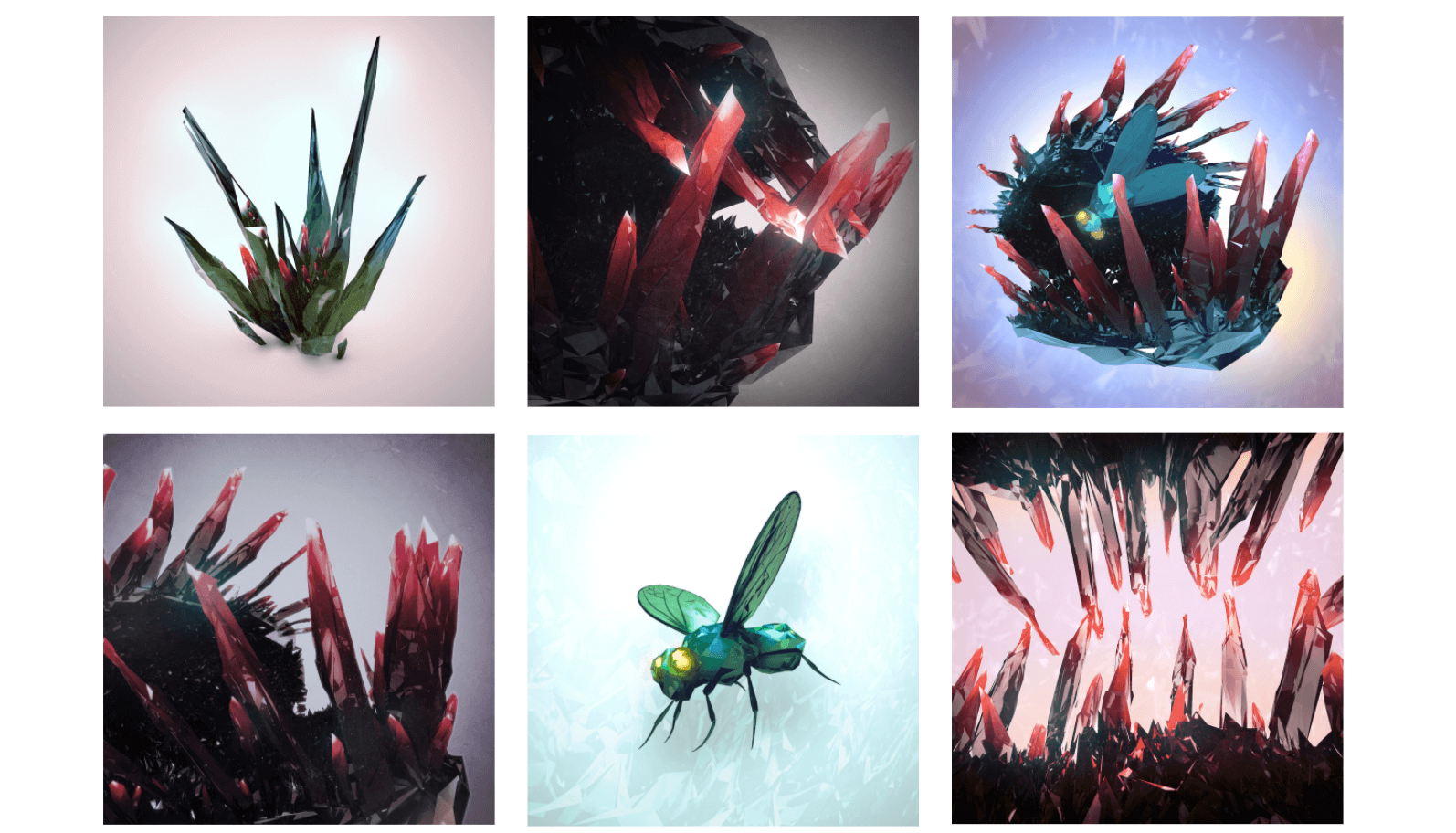
Living in Berlin, Ed now works for an international company called Delivery Hero – one of the leading global online food delivery marketplaces. You can find more about them here: Delivery hero
Ed also had the opportunity to promote the company and design a new identity , using his skills and inspiration in 3D design and motion design.
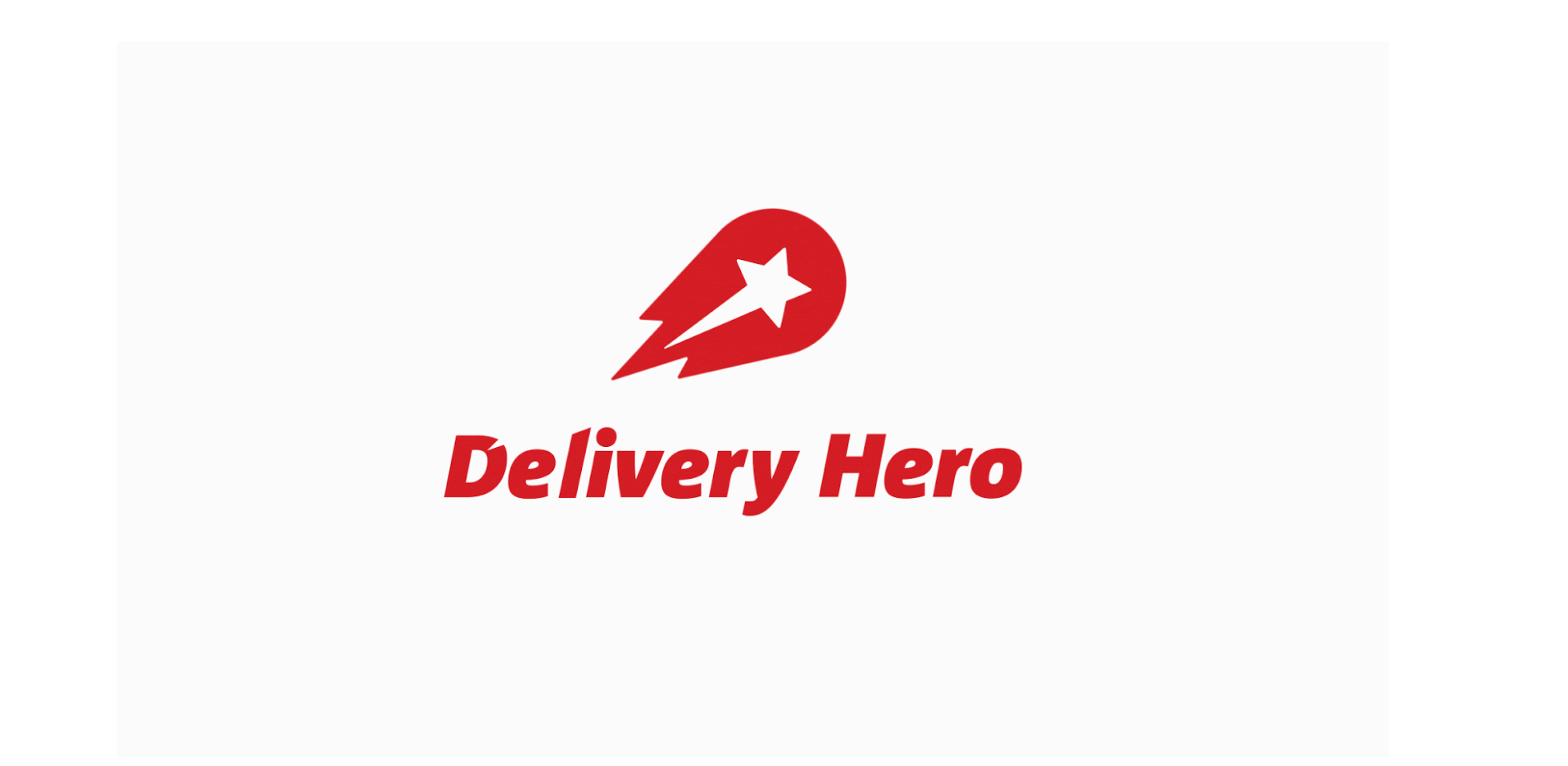
‘This was a huge project that took me three months!’ Ed Hendry
Ed also worked on a very interesting personalised animation project which he spent months on! Ed Hendry – Motion Design Reel 2020
As we all know, every project goes into our portfolio. This builds our recognition and progression from project to project.
However, unfortunately, it was not published by the his company due to technical problems. Still, Ed is very proud of his success in creating this type of motion design. The students learned a lot from his presentation including to even put work in their portfolios that did not get to be published. Certainly, this is for the sake of building your portfolio to show success ambition.
Ed is currently pushing his 3D work in slightly new directions, revisiting lettering, focusing on music and planning to get into VR sculpting!
These are some of Ed’s examples of 3D sculpting design.

Reflection
Nikki, Anne and Ed all inspire us to continue working and exploring what fascinates us – this will guide our way forwards! They suggested we all focus on building our social networks throughout our course, and seek internships and work experience wherever we can. We can also gain advantages by completing Real Jobs and getting a true insight into the industry of Graphic design, and especially client relationships.These things can empower us to develop a solid portfolio and be ready for full-time jobs.
Sometimes, students may not specifically know what interests them or what they want to do when they graduate, and that’s normal! If you have a dominant interest, you might aim to prototype your work project towards them during your experience on the course But it’s not expected that everyone recognises their destiny within the field. Research and explore, talk with our amazing tutors about your interests. By doing so, you will truly find your way.
Students’ Thoughts
‘Was really interesting to hear about different options for careers and the things past graduates have achieved!’ – Part 3 student
‘So many facets of design were covered, and it was so interesting to hear both the highs and lows of their projects. Just a nice reminder that even the big professionals have things go wrong sometimes!’ – Robin, Part 3 student
‘I really enjoyed learning about the guest speakers work and some of it was really inspiring.’ – Adam Powell, part 1 student
Design Print Bind: Working together
Flaminia Rossi and Samantha Whetton, owners of Design Print Bind talked to us about running a small studio, what it's like as a freelancer and the communities they are a part of.
Seniz Husseyin: Shaping careers into the third sector
In week 5 of the Spring term, Baseline Shift welcomed Typography & Graphic Communication graduate Seniz Husseyin who talked to the students about her experience within the Department and how it shaped her into wanting to work for social change in the third sector. In June of last year Seniz started working with a charity in Reading called Launchpad and she also shared some of her experiences from there.
University and beyond
Seniz started her degree in 2017 and graduated in 2020. In the beginning she was nervous and doubting her capabilities, however she decided to ignore that and not let it get in the way.
Trying to get the best out of her university experience, Seniz joined the Department’s diversity team in her first year when it was first proposed and each year, along with the increasing opportunities from the team, her confidence and passion to continue working for good social causes grew. That really changed her perspective as a designer and shaped her future career choices. It was no surprise for her when she found out that the designer industry is mostly populated by white males and a lot of the history that is taught reflects the same. Learning about the cultures and ideas within design outside of the western canon was an opportunity she couldn’t miss.
For the years she was part of the diversity team, the team was able to help change the curriculum by incorporating more opportunities for diversity and inclusion to be taught such as the Design for Change module. The diversity team has since given presentations at the RUSU Partnership in Teaching and Learning Showcase and Baseline Shift. Being part of the team also allowed Seniz to meet people from all year groups and other departments, conduct two workshops at Tate Modern and create an annual diversity zine.
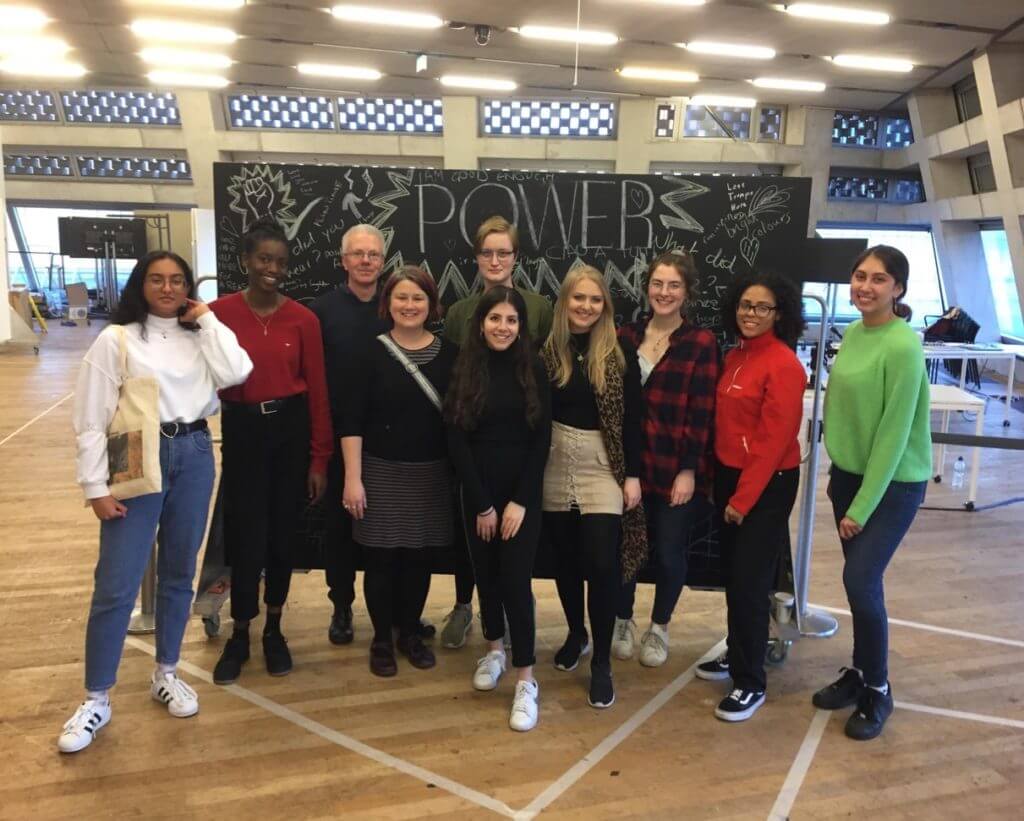
Seniz believes that these major parts of her university experience have shaped her into the designer she is today and built up her desire to work on projects for good causes or that will help bring change.
‘I am now more conscious of the companies I want to work for or who I apply for.’
Launchpad Reading

The inclusive experience Seniz had at university and her newly formed mindset towards work led her to apply for a marketing internship for the homeless charity at Launchpad Reading.
Seniz describes Launchpad as Reading’s leading homeless prevention charity. She said they provide information and support for individuals, couples and families who don’t have a stable place to live or are at risk of losing their home. They also provide temporary and permanent homes and rebuild lives through activities, supportive education, training and employment. Seniz was also pleased to find out that it was actually founded as a soup kitchen in 1979 by students at the University of Reading.
Wanting to be involved working for a charity, she thought that having new marketing experience would be really beneficial for her design work. Seniz found the internship through the Reading Internship Scheme, which she highly recommends for finding internships or even voluntary work since experience is extremely beneficial and can set one apart, especially at a time when employers are looking for staff with experience.
In the beginning of her career at Launchpad, she also completed a digital marketing and advertising online course because she wanted to make sure she had basic training while working with the Marketing Team.
Launchpad
Seniz initially started at Launchpad as a marketing intern through the Reading Internship Scheme but after three months of working with them she was offered a Marketing Assistant role.
Even though it was marketing, she was hired because of her design background which provided a huge overlap between both industries. Being able to get this marketing experience really helped Seniz improve as a designer too. Seniz was the first designer employed at the small charity and working with them she helped with their website, fundraising campaigns, social media, email newsletters, video editing and other tasks. Even though her title was Marketing Assistant, she did feel more like an in-house designer. If you are a designer, looking to become more business savvy, Seniz suggests learning some marketing knowledge.
‘Design and Marketing are two sides of the same coin, and what binds them together is the primary focus of understanding and appreciating the user or target consumer.’ Design So Journ, ‘The relationship between design and marketing‘ in designsojourn.com, 2010.
Big Sleep Out
The Big Sleep Out is Launchpad’s annual fundraising event and one of the major projects Seniz has worked on within the charity.
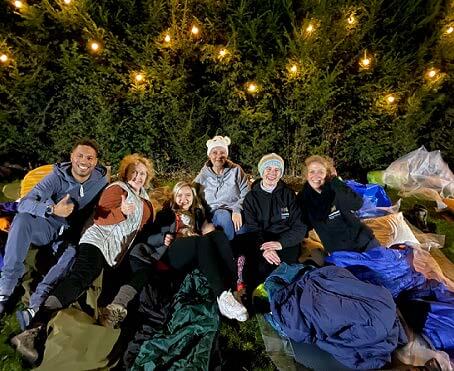
The event takes place on world homeless day – 7 October and 2020 was the fifteenth year the charity was running the event. Unfortunately, due to the pandemic, the event was made virtual but this was a daunting new challenge for everyone in the team to adapt to a virtual event.
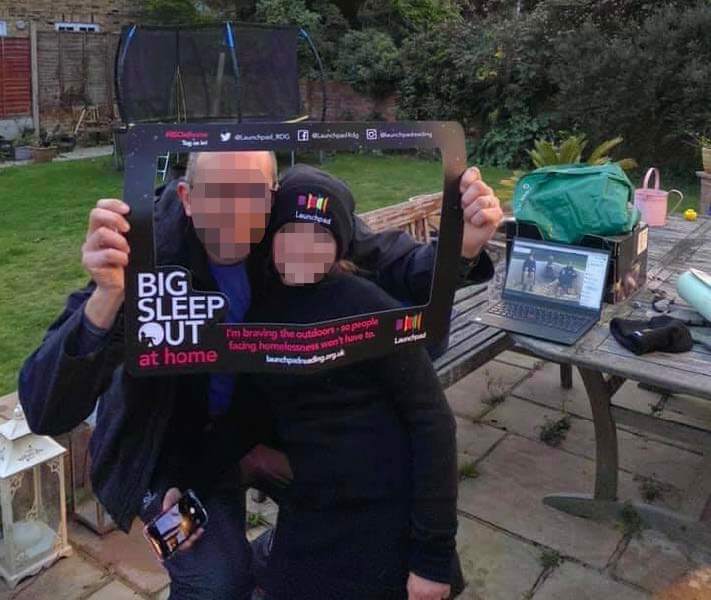
However, because of that, Seniz felt that she was learning and contributing as much as everyone else on the team and created new digital materials that were specific to what people could use in their homes and plan new strategies. The 2020 event saw a big turnout of people from Berkshire which raised a total of over £50,000 that would go towards preventing homelessness in Reading. The sum was actually double their initial target. When creating the items for the event, Seniz worked with a logo created by an external designer to create all other materials for the event. Part of the promotion for the event was getting the word out to the public, so Seniz had to create large scale work with a visible call to action.
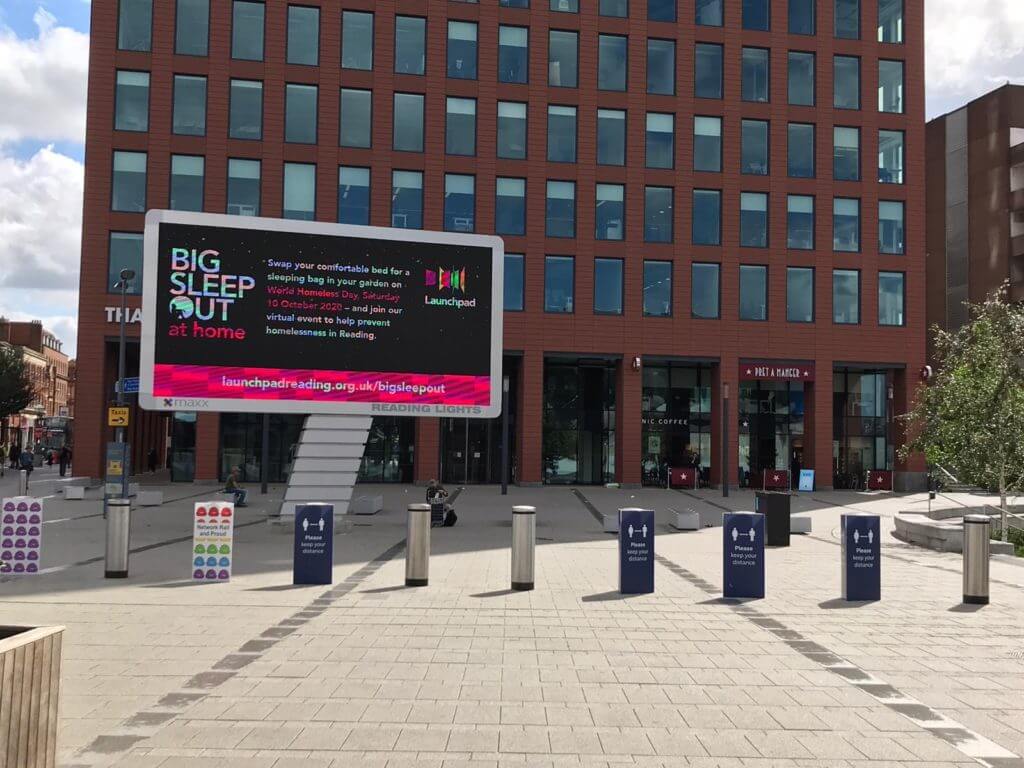
Other materials she designed include the event programme booklet, flyer design and social media banners, all of which were vital. She made sure the text in these was easy and visible to read while keeping engagement throughout.
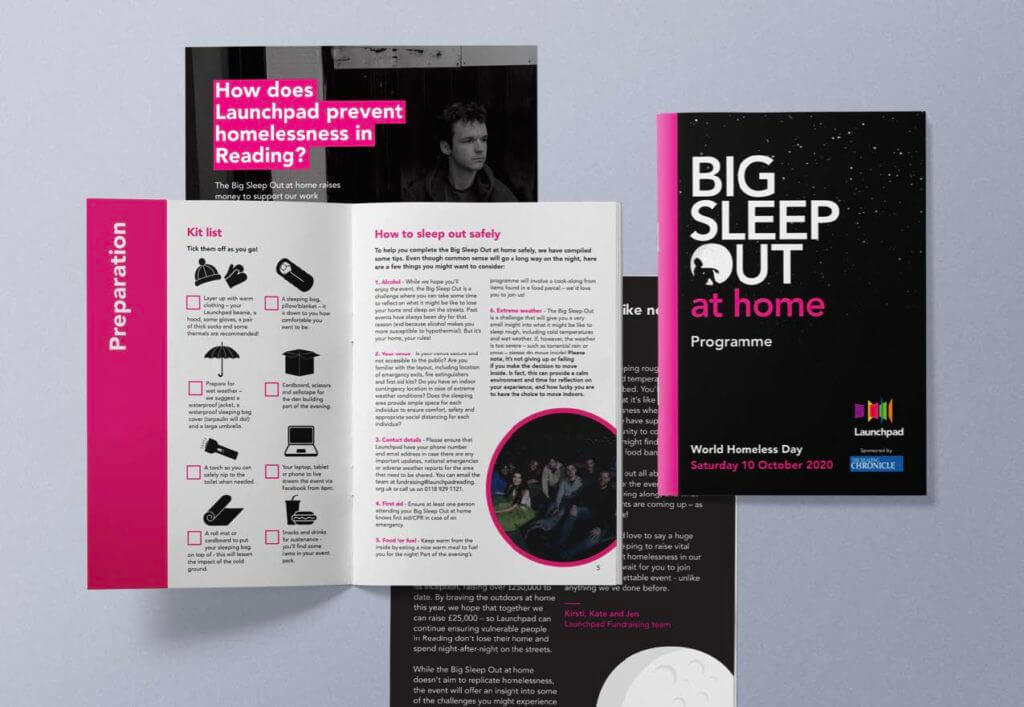
Seniz aimed to make all of these consistent whilst also adjusting to the specifications. She also designed downloadable content that participants could use to create more recognition and support for the charity, such as the event pack.
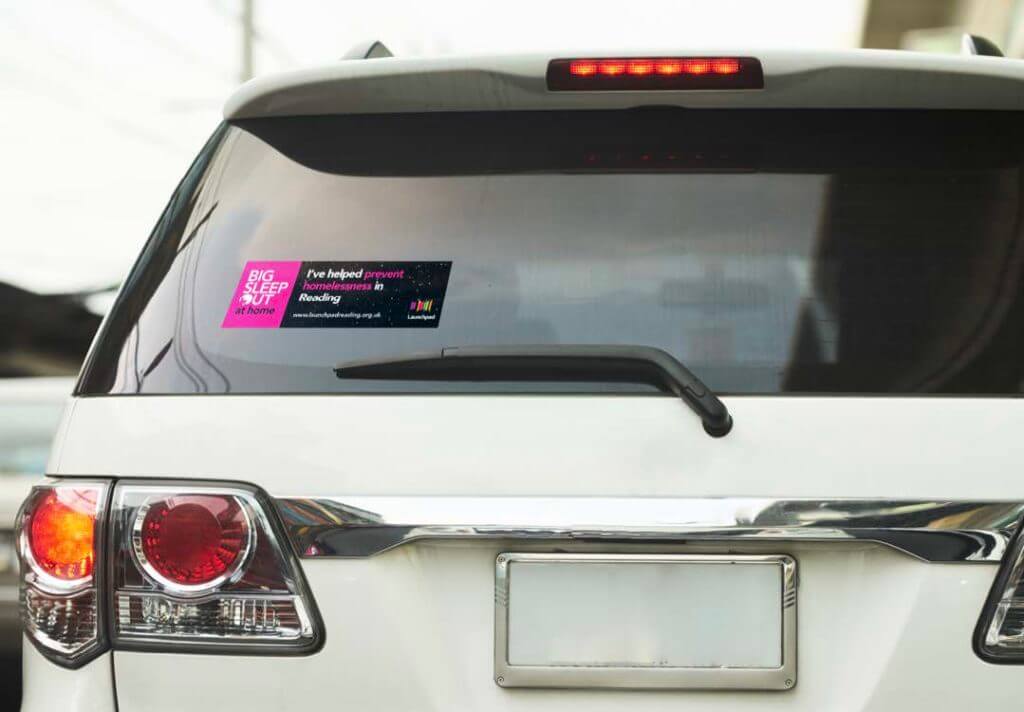
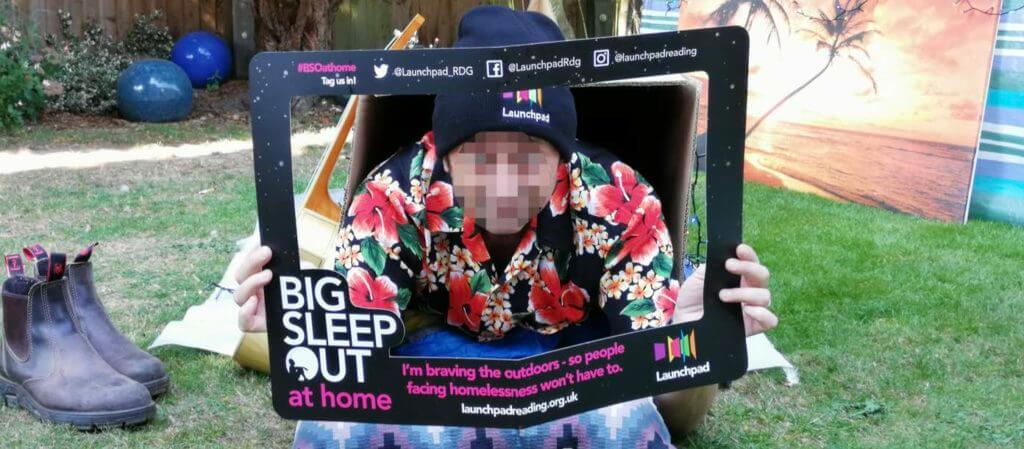
Working through a pandemic
A big part for Seniz within this role was working through a pandemic. While new, it did come with some advantages. Knowing that everyone is going through it together for the first time actually made staff grow as a team. They learned new skills such as how to adapt in constant changing circumstances and within unknown times. Working from home also meant she had to do less travelling.
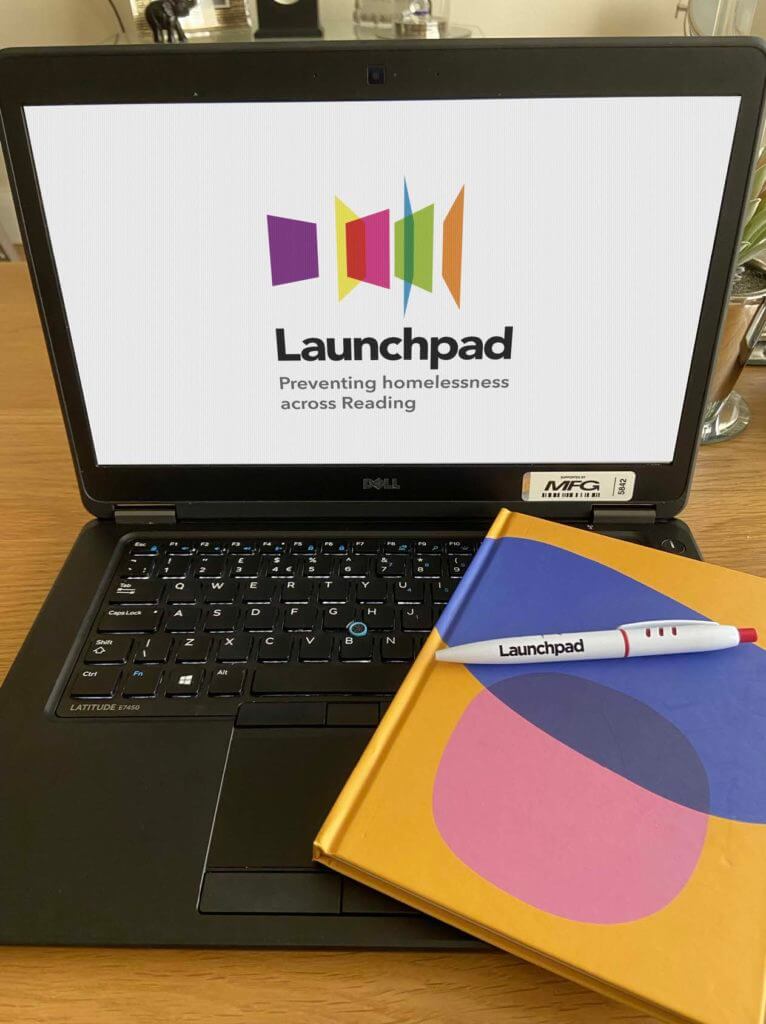
Some challenges included having most of the charity’s events cancelled, and when adapting to the new online way of doing things, there wasn’t enough time to plan it out properly. Starting a new job this way did feel overwhelming but Seniz never felt left out.
Recent work
Seniz is no longer working for Launchpad but some of her last projects for the charity included designing some of the external and internal signage at a new Life and Skill centre called Launchpad 135.
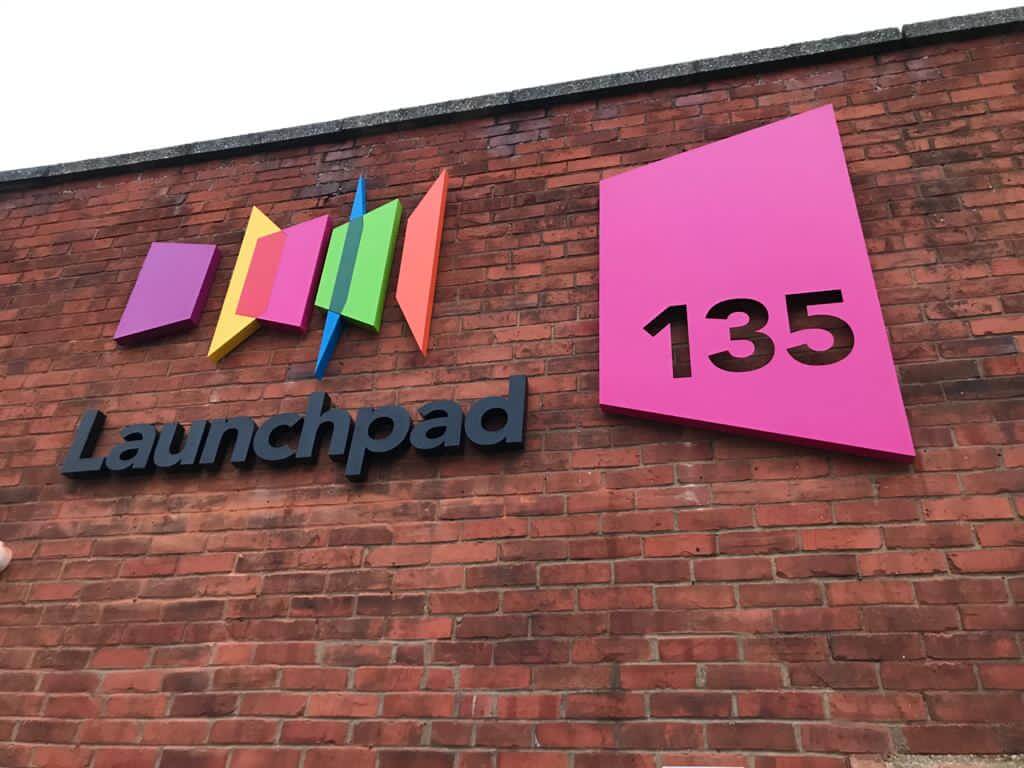
Another thing she was also working on was the charity’s brand refresh which included all publication materials. Overall she hopes to continue her career in the sector.

Closing thoughts
Seniz said if there is anything she would want us to take away from her presentation it would be to make use of everything the Department offers and pursue our interests in designing for good causes. Being able to see first hand how her work helped people through feedback and client stories was so motivating and she certainly didn’t have this mindset in first year but the Department really did help introduce her into this lane through certain modules and projects. Her advice is to grab all the different opportunities we have because they can open many doors and she definitely recommends being a part of these even if it is out of our comfort zone.
Students’ thoughts
‘It was nice to see how someone with a similar path and experience to me has gone on to do cool stuff and make a career. Very comforting especially that she managed it in this current chaos – shows how far hard work actually gets you!’ – Part 3 student
‘I always value the talks from past students because I feel like there’s a bit of a gap between uni and working in my head so it’s valuable to learn what others did afterwards to make that step.’ – Part 1 student
Achilles Gerokostopoulos: Design as a team sport
In week 4 of the Spring term, Baseline Shift had the pleasure to host a talk by Achilles Gerokostopoulos – a graduate of the department who has lots of experience in software, tech and corporate communication. Currently working at the Irish National Lottery in Dublin, Achilles’ career involves working in design teams which is what he talked about in the session.
Working in a team is the alpha and omega of design at the moment
Achilles’ career path is a very interesting one. He graduated from The University of Reading’s Typography & Graphic Communication department in 2004 and found work in various aspects of design after that. At first he was very interested in editorial design; working for art directed magazines such as Esquire in Greece while also doing some design consulting for newspapers. In fact, one of the newspapers he worked on in Greece – Eleftheros Typos, was awarded Best Designed European Newspaper in 2007. After the Greek economy crashed Achilles decided to move to Amsterdam where he got into tech design. There, he worked as a design director in the gaming sector and a while after he began a freelance career in design consultancy which led him to Dublin. At the moment he has just begun working as a design lead for the Irish National Lottery.
Through these numerous jobs Achilles gained a lot of knowledge on how teamwork happens and what it is like to work in product development – ‘One of the likeliest industries you might be absorbed in’, he says. That is why he decided to tell our students a bit more about design in product development as well as the inner circles and relationships between design teams, developers, businesses and users.
With the rise of digital businesses, design is emerging again
From his experience, Achilles suggests that more and more businesses are going digital. During this process they realise the importance of design and how it will help them develop further in the digital sphere. He also mentioned that old companies have recently bought design companies to have them as in-house teams, the trend of working with or alongside designers when developing a business is on the rise. This results in an increase of designers being absorbed in the business industry early on in their professional careers and working with stakeholders, businesses, users and development commonly.
Achilles continued with a graphic (shown below) of the core stakeholders in product design. He stated that any product starts with users and their needs.
‘In product development a lot of your work will be finding out as much as you can about the users.’
Then there is the business – it is set up to address a particular user or consumer need, and usually sells that as a product or service.
And finally, development – they are the group of people that are called upon to implement and produce the business’s idea.
‘Design sits at the intersection of all these.’
Working in product development, Achilles says, there will be people whose needs you’ll be needing to address and you have to balance a lot of people’s wishes and needs.
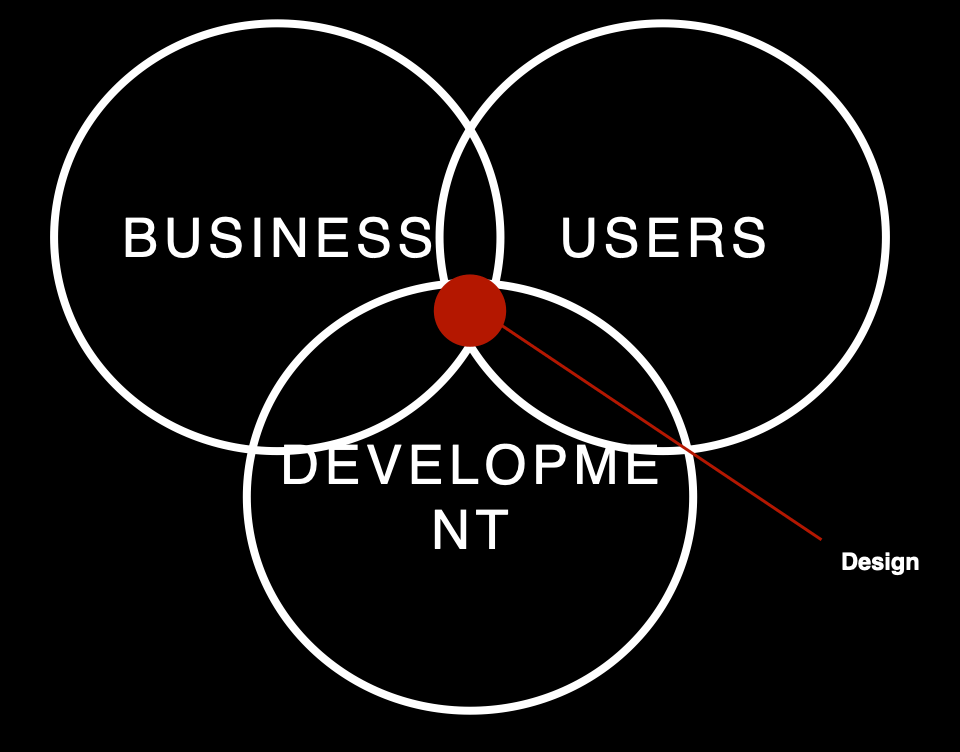
Design has two major sets of functions
Achilles explained how digital product development design can be seen to perform two major sets of functions.
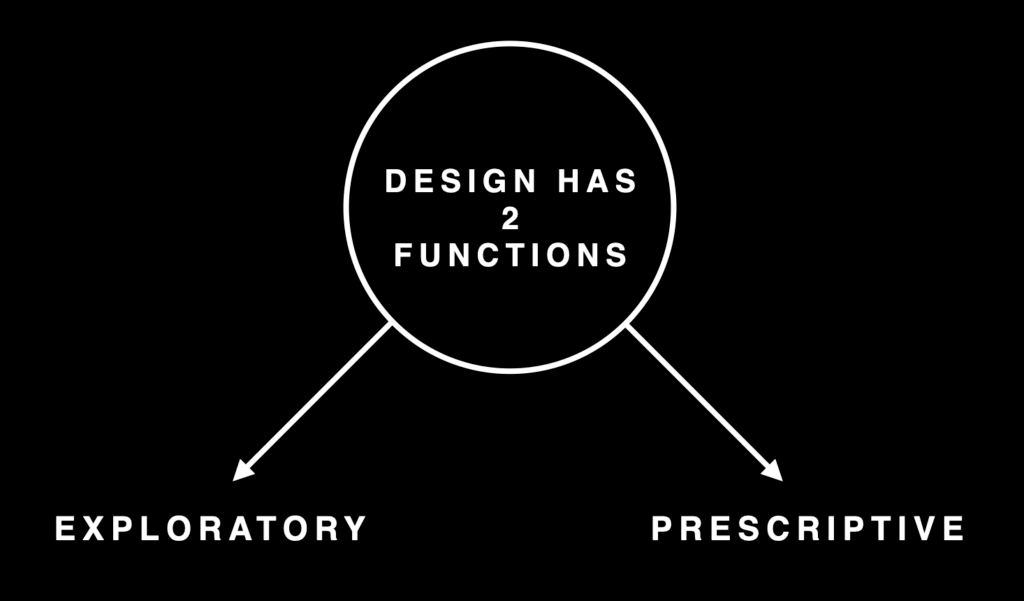
First are the exploratory functions which mainly deal with exploring and defining the problem space. Designers answer questions such as: What needs to be designed and why? Some common practices in the process feature creating workshops, conducting user research, collaborative ideation and process / journey mapping.
Second are the prescriptive functions which deal with translating the requirements into specifications and design assets that development can implement. This includes design specifications, graphic design, interaction design, and design system development.
Once you understand these functions, Achilles said, especially in larger companies, you get to the organisation of the design teams which perform these functions most effectively within the context of a company or organisation.
Two models
From his experience Achilles suggests that there are two broad models for design in product development.

The agency model: where the design resources are concentrated and function like an internal agency – centralised design organisation using waterfall development, and the embedded design model: where design resources are distributed across various product teams, using agile development. Of course, these are only two edges of a full spectrum of models since companies differ in their implementation of design teams and one can definitely recognise some that are in between but Achilles points these two main ones out.
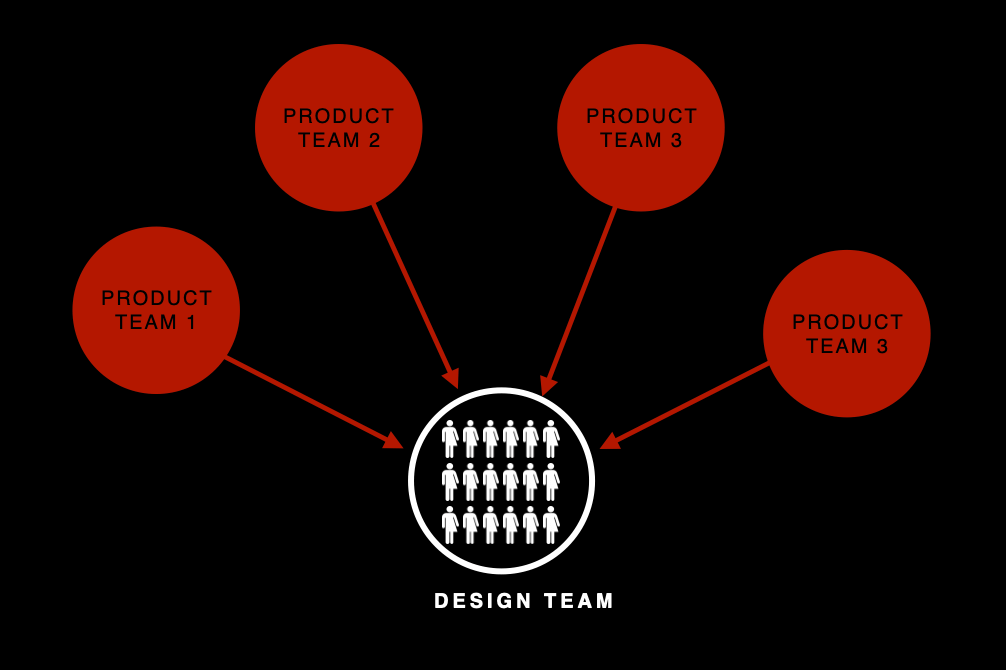
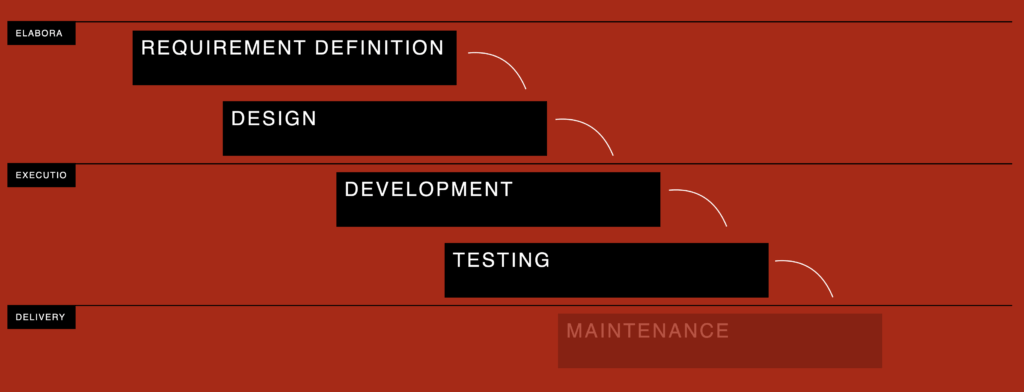
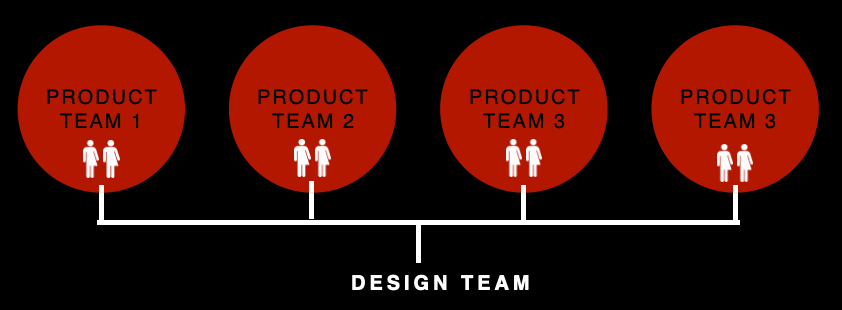

Achilles thinks that both models have their advantages and disadvantages, and largely depend on the structure of the company – the larger the company with a number of development teams, the more likely they’ll be using the embedded model.
Communication and coordination
After going over the different models, Achilles continued by describing the methods we can use to coordinate design efforts. He suggested that in either model, there will be several kinds of stakeholders and the designer is in the center. He showed a graphic where these are displayed in concentric circles by proximity of concerns to the Designer.
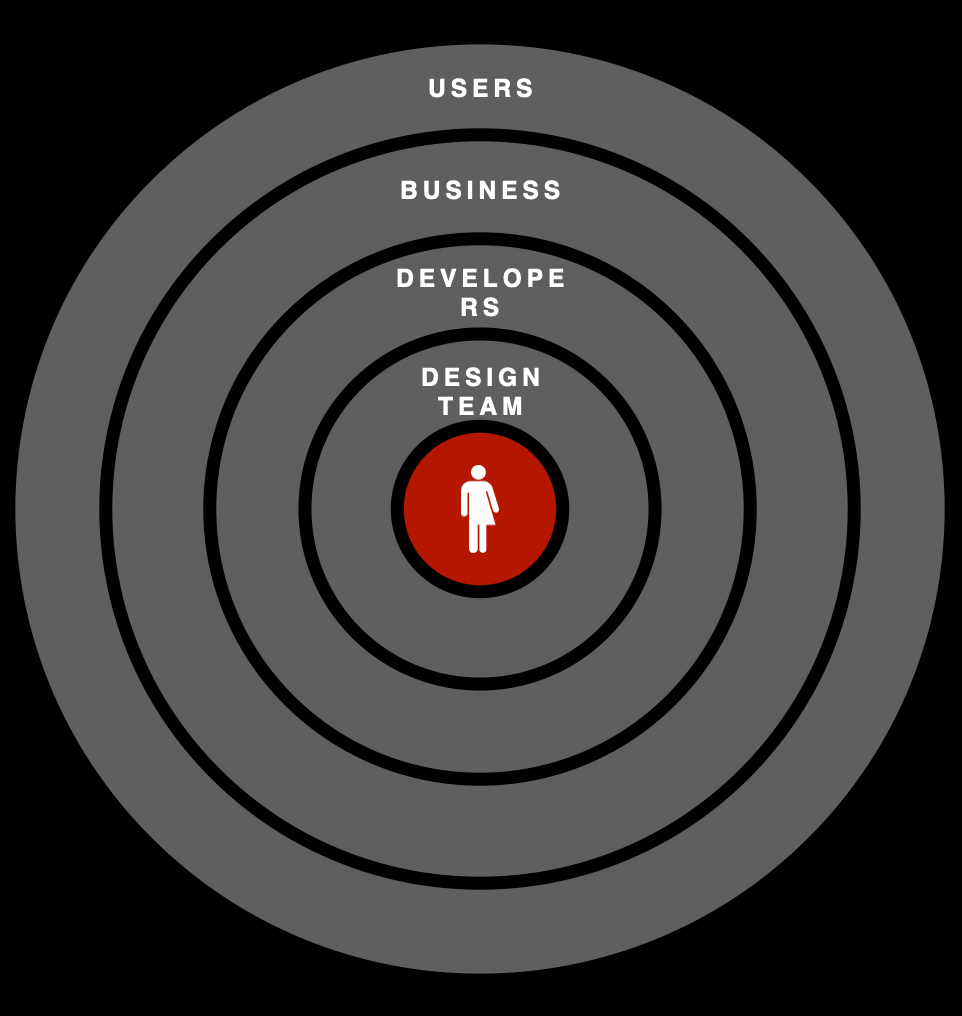
Design systems and common rituals
In order to communicate and coordinate with the stakeholders, Achilles recommended the use of design systems and common rituals.
Design systems consist of a common set of approaches to particular design problems, a common repository of design assets for use by all designers, a well maintained design documentation and a fully developed pattern library. Being a rather old concept, Achilles said that from his experience they have been an absolute necessity for most editorial design, especially newspapers. He also mentioned that recently there have been a lot of new tools emerging to help the development and use of digital design systems.
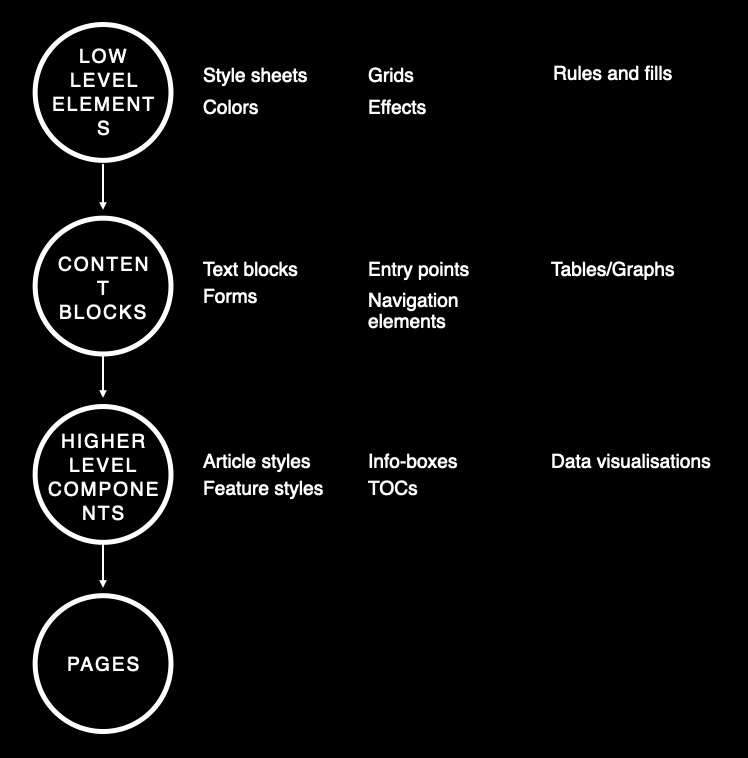
Common rituals, on the other hand, Achilles said, are one the easiest parts of the process, but also the one most commonly neglected. They, however, are very important in order to help the team and stakeholders with knowledge transfer, create a more cohesive team, promote spontaneous communication and avoid repeating the same mistakes.

What should you do?
To end his presentation Achilles decided to give some tips to our students if they ever find themselves being the new designer in a product development team. His three main insights were ASK, CODE, CHANGE.
First is to never be afraid to ask questions, Achilles said. As a young designer there will be a lot of things you don’t know, and you won’t come out of university fully formed. He suggests that your first job should be a learning experience.
Second, in a product design environment it is essential that you understand how technology works. Especially the closer you are to the visual design. You don’t need to become an expert but it helps to understand the underlying systems, but also some more abstract concepts. This will help with communicating with developers, but it will also greatly improve your design skills.
And third is to not be afraid of change. Life happens, things get thrown in your way and you’ll need to adapt. When things don’t work, and your circumstances aren’t conducive to your happiness, change your circumstances. It’s not easy, it’s not always fun, but it’s better than staying still.
Useful Links
Here is a document with some useful links Achilles suggested for students interested in this topic to look through: Links
Students’ thoughts
‘I really liked the general view of the sort of workflow for designers in the future, the small bits and pieces that you can only get from a designer who has been in the market for a while with a diverse background.’ – MA student
‘It was great to hear such professional insight on the real models of businesses concerning designers.’ – Part 1 student
Baseline shift animations 2020-21
Background
Baseline Shift is a series of design talks, events and workshops organised by a team of students for students at the department of Typography & Graphic Communication for the duration of the Autumn and Spring term. These talks happen on a weekly basis – every Wednesday, and are usually led by guest lecturers who are professionals in the subject. They aim at helping students expand and redefine their understanding of what a designer is, and what design can do.
I joined the team in the summer before the beginning of my third year at the department which made my job a bit challenging but also very engaging because of the ongoing pandemic. Since in-person teaching and events were limited to a minimum, the team had decided that all the talks for the upcoming year would be happening online.
These talks had already been happening for a few years now so the team and I were provided with guidelines which were written by past students who had been working on Baseline Shift.
Initial meetings
As a team we organised a few initial meetings between ourselves and the client – James Lloyd. These happened over the summer and we discussed how the new online events would commence in the upcoming year, what changes we might introduce to the guidelines and the talks, and how we would make them digital friendly, as well as discussing potential speakers we might invite.
Research
In the first stages of the job we had to do a lot of research on how we might introduce new alterations to the branding as well as strategies for promoting the events online and in the department so that students would be aware of the importance and benefits of the sessions and come to our talks. We also had to look up potential speakers and suggest four whose talks we believe would be meaningful and engaging for students in different years – from Part 1s up to MAs. Since Welcome week was beginning on the 21 September, we had to get everything done and signed off by James by the 18.
Working as a team, we managed to decide on speakers, rethink Baseline Shift’s branding, including poster design and screen graphics, talk about roles in the team during the year and set up all of the promotional materials in one single InDesign file for ease of use.
For speakers, I suggested four, but after a unanimous decision we only picked one of mine, which was the Bulgarian graphic and motion design Studio Four Plus who later went on to give a wonderful presentation.
For changes in the branding, I personally worked on creating animations for Baseline Shift’s Instagram story, animations for Baseline Shift’s Facebook posts and an animation to be played on the department screen. All of these you can see below.
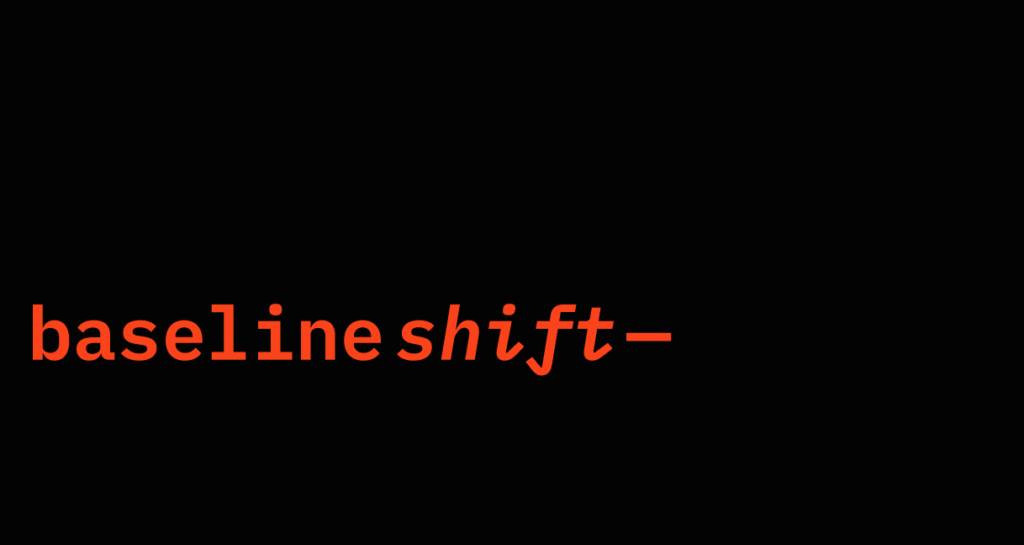
Spring Term
After organising a plan of action, the team started splitting into roles. We had two main ones: Promotion – two team members responsible for the creating and posting of promotional materials, and Attendance and blog writing – two team members responsible for attending Baseline shift (run on Blackboard Collaborate this year) to run, gather from and document the sessions each term.
In the spring term I was grouped with another member of the team to do promotion, which meant I had to overlook the designs she created for every weekly event, make sure one of us posted promotional materials on Facebook and Slack (for MA students) on Monday and Instagram story on Tuesday, update the department screen graphics every Wednesday, take down and put away the old posters and print, cut and hang the posters for the new session on Wednesday.
I also voluntarily handled all speaker contact in the duration of my time on the team which gave me the opportunity to make some lasting contacts within the design industry as well as improve my communication skills.
Winter Break
After a successful spring term, the team decided to meet up during winter break to talk about changes in the roles for next term as well as some updates on some of the branding material. We were looking for a new message for the department screen stating that Baseline Shift sessions would be back soon to be played during the break. I worked to create a new message which you can see attached below, however we decided that there was no need for such a message since there was no one in the department during that time.
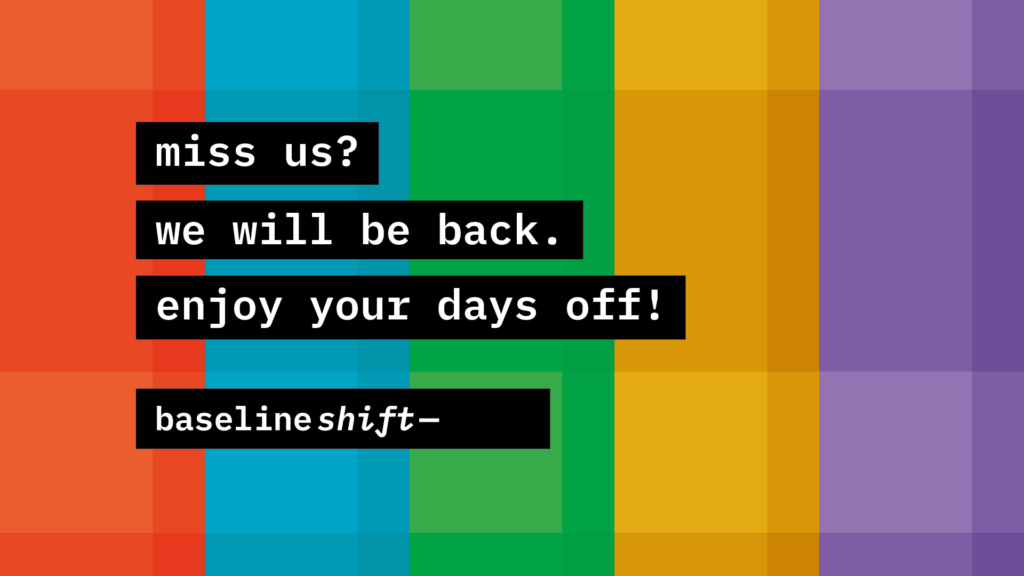
Second Term
For the second term, the whole team switched roles so that everyone could experience every part of the job, which I believe was smart. That meant it was me and my partner’s turn to attend the sessions and write blog posts afterwards. We decided that at first I would be leading the sessions and taking notes while she would also be taking notes but write the blog posts afterwards which I then overlooked.
I really liked this role since it challenged my fear of speaking in public, however having all talks online over Blackboard Collaborate made it a bit easier. Also, my camera did not need to be switched on which was great! I even got a few emails back from our guests saying that I had done ‘excellent chaperoning’.
For some of the sessions me and my partner switched our attendance roles and she was the one leading the session while I had to write the blog posts. To be honest, this role was a bit more challenging but I’ve always had a problem with writing which I also managed to challenge working on this job and even slightly overcome.
Reflection
I really enjoyed being part of the Baseline Shift team and am even sorry that I was this late in joining and was only able to do it for one year. I believe this is a job that allows students to develop a range of skills from design and professional communication to public speaking and writing. I would recommend this job to anyone even slightly interested in developing their professional skills in all of these and other directions as well as to people looking to expand their contacts in the design world.
Baseline shift: organising, promoting and hosting a series of design talks
Baseline shift – our series of design talks – is student-led. Find out what this entails.
Feedback jam: graphic instructions, leaflet designs and designing for screen
Week 9 Baseline shift presented a feedback session by our tutors. Here are super useful tips for all designers!
How to manage your time
Time management is an elusive skill that tricks even the best of us. Here are some useful tips that our lecturers gave us to help you keep on schedule!
Book design: from between the covers and behind the binding
Bryn Walls shares his experience and knowledge with extraordinary book formats and originality in binding designs.
